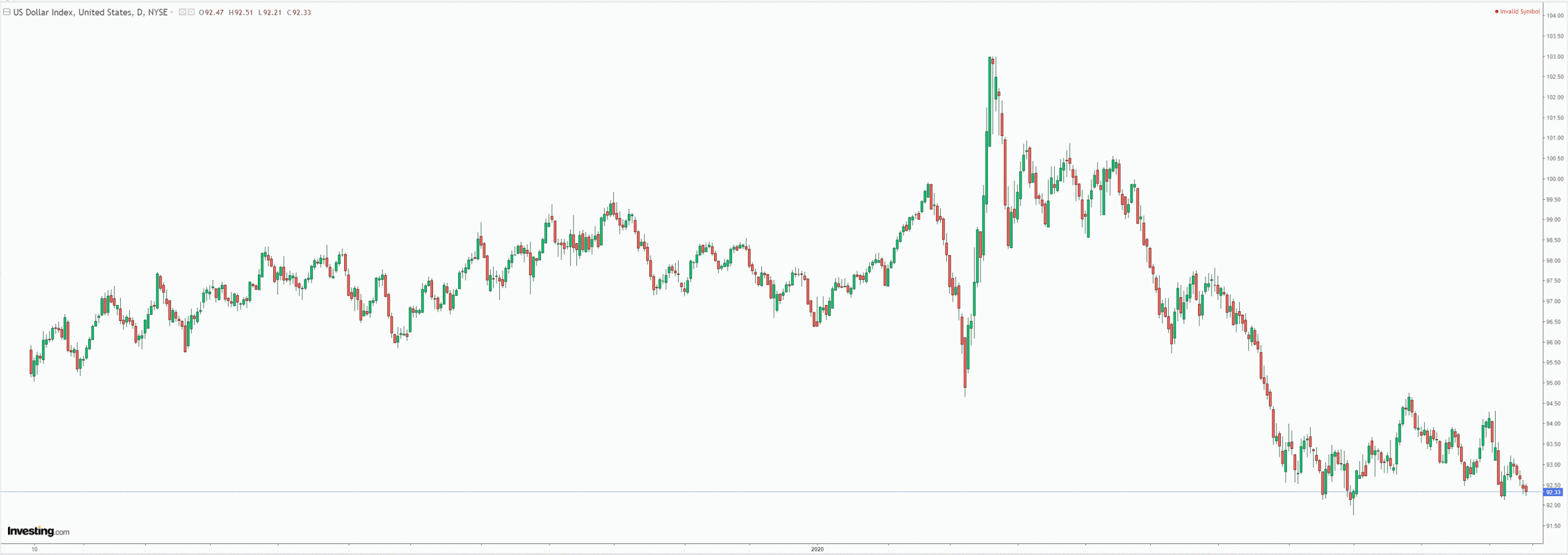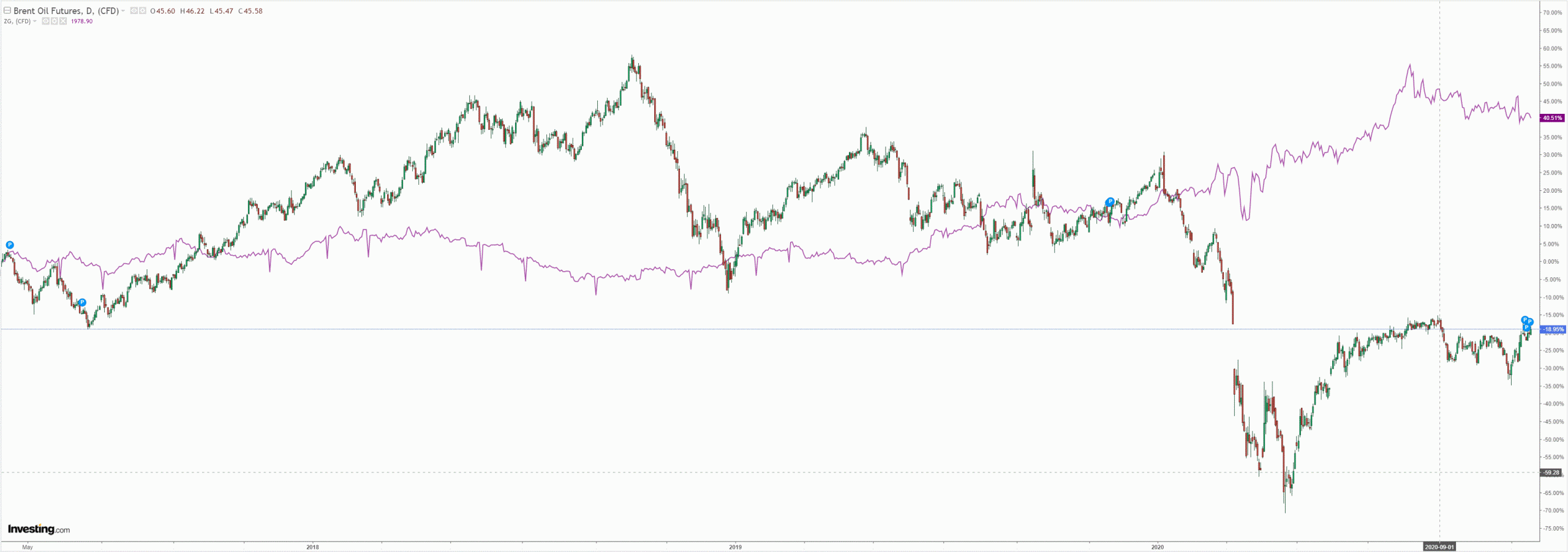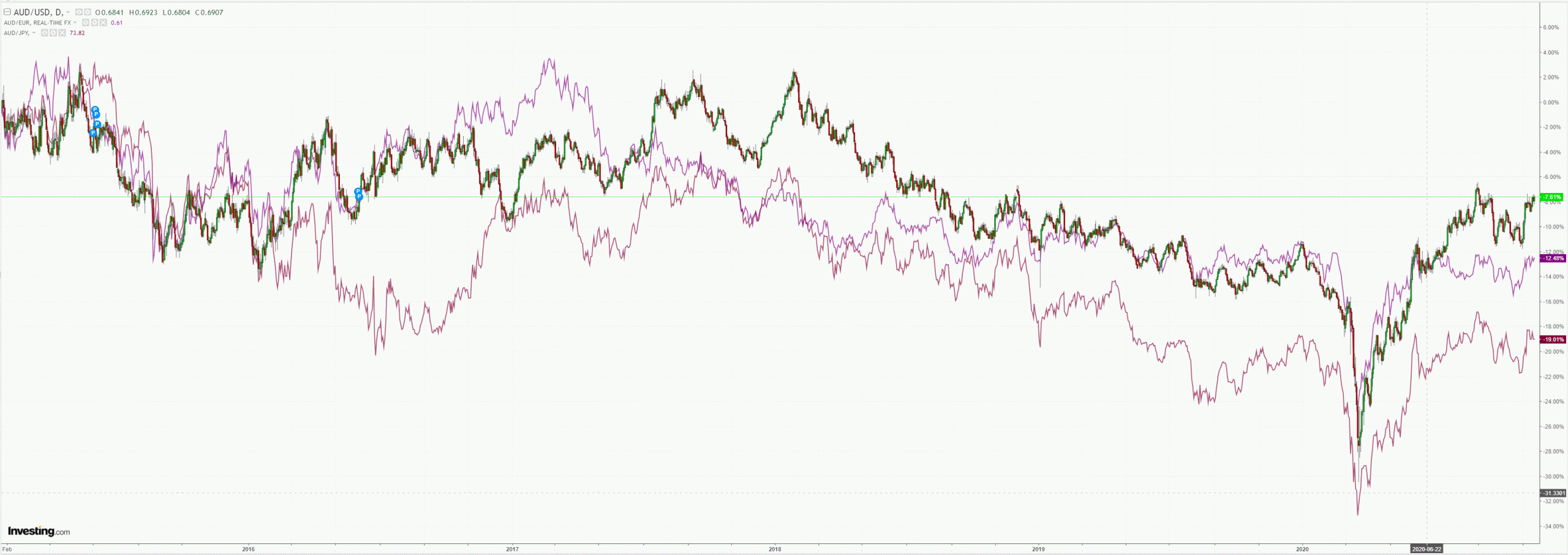DXY was down and is at the cliff’s edge again:

Gold is oddly weak given the falling DXY. BTC anyone? Oil was up:

The Australian dollar was firm:

The rest of my charts have gone a bit skewiff this morning. Apologies. Suffice to say bonds and stocks were sold. Westpac has the wrap:
Event Wrap
US drugmaker Pfizer said a final analysis of clinical-trial data showed its Covid-19 vaccine was 95% effective, allowing the company to apply this week for the first U.S. regulatory authorization.
U.S. housing starts rose 4.9% in October, stronger than the 3.2% expected, and following a 6.3% gain in September. The gains were led by single family homes. Building permits were unchanged (vs 1.4% gain expected), but remain at the highest level since 2007. The housing market remains buoyant, the pandemic-related shift toward suburbs and single family homes also supported by historically low mortgage rates.
Event Outlook
Australia: With Victoria under lockdown during October and payroll data pointing to a broader slowdown in the national recovery, Westpac is looking for October employment to fall 30k. If the participation rate eases to 64.74%, then our employment forecast would see the unemployment rate lift from 6.9% to 7.2%.
US: Initial jobless claims have been gradually trending down, but the accelerating spread of the virus and the lack of a fiscal package pose a risk going forward (market f/c: 700k). The November Phily Fed Index should pull back after a jump in October (market f/c: 22.5), whilst the November Kansas City Fed Index has recovered to be above pre-COVID levels (market f/c: 11). Meanwhile, the leading index has been supported by moderating initial claims and is expected to hold at 0.7% in October. Westpac sees a 0.5% fall in October existing home sales after turnover reached a 14-year high in September. Finally, the FOMC’s Kaplan (10:00 AEDT), Bostic (11:00 AEDT), Mester (00:30 AEDT) and Rosengren (05:00 AEDT) will speak.
The basic themes remain the same. Europe has moved decisively on the virus. It will emerge from its lockdown into vaccine issuance in decent shape. The US is still only slowly locking down as local areas are overwhelmed. The economy remains far too open so the virus keeps spreading. Scuttlebutt around fiscal support remains elsuive. It has a brutal winter ahead.
Normally, we might expect this combination to trigger rises in DXY playing the role of safe haven. But the global economy is still recovering and the vaccine rollout of 2021 has short-circuited that process so we keep pricing for extraordinary Fed stimulus and the rebirth of a global growth cycle instead.
It is the lap of the gods whether this continues. I see the virus getting much worse yet in the US so that may be enough to shake the edifice of faith, or not.
Looking into 2021, which is what forex markets are doing, the AUD is going to lift along with all of the usual suspects in an early cycle run from the centre of global capital management in the US to the periphery in EMs and commodities. This is perfectly normal.
But, importantly, I still do not see this process driving the AUD anywhere near as far as it would normally. As the globe recovers next year our virus advantage diminishes. Iron ore will normalise. Domestic demand will be hit by the Chinese decoupling. The RBA remains uber-dovish. As fiscal is withdrawn, domestic demand will wilt.
So, enjoy the early-cycle, Fed-driven, AUD bid while it lasts. Underneath it, AUD fundamentals world are falling apart and they will have their day before long.

